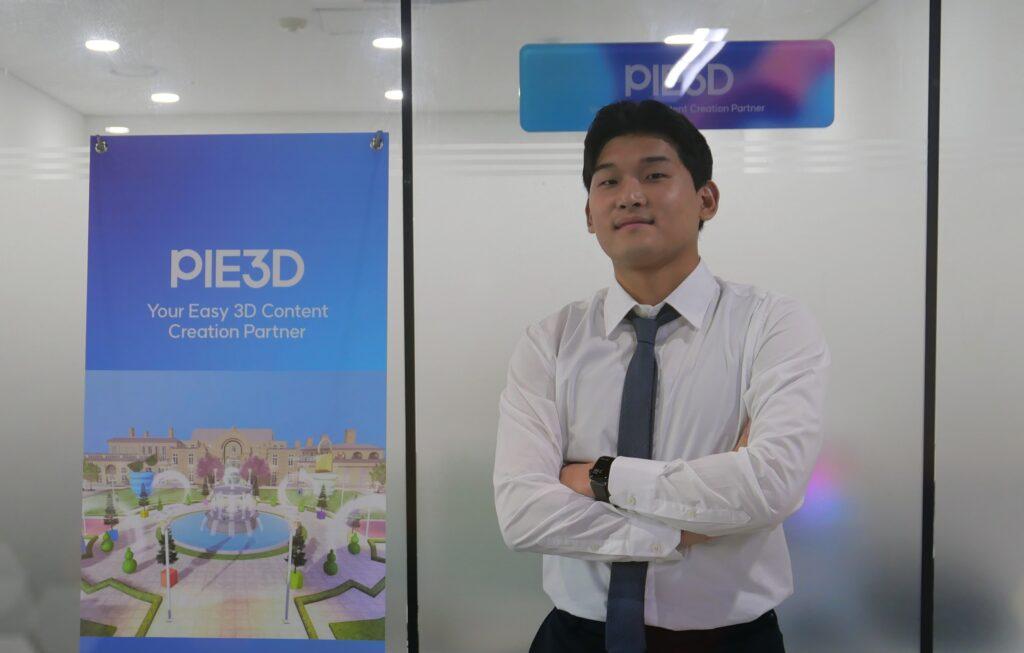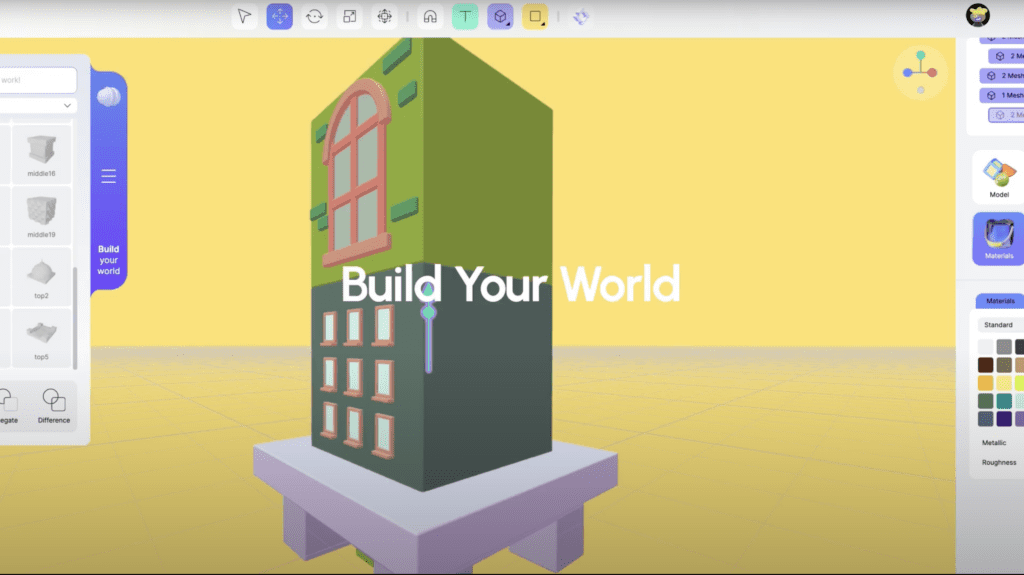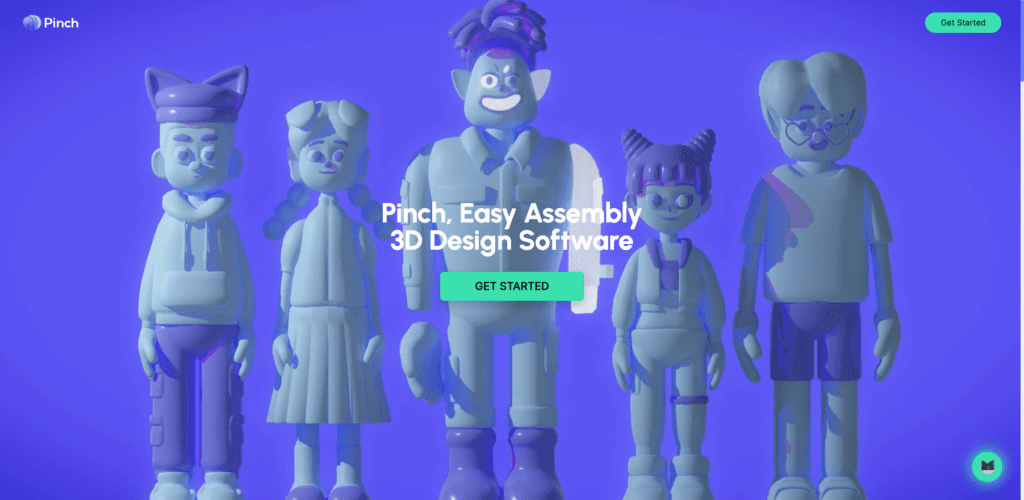After the pandemic, metaverse technology has diversified even further, being utilized in films, education, and public services.
With the activation of metaverse content and the industry’s growth, there is an increasing demand for 3D design personnel. Addressing this issue, HyperEZ (CEO Yoon Sangseok, Yoon Yerim) operates the “3D Asset Trading Platform PIE3D,” enabling metaverse companies to create fast and high-quality 3D content.
Based on innovative technology and services, the company, which began with the aim of revolutionizing the 3D ecosystem by enabling anyone to easily create and provide accessible and sustainable content in the traditional metaverse content production process, has solidified its global competitiveness by entering the Metaverse Hub, a startup space for metaverse-related startups at Pangyo Techno Valley, supported by National IT Industry Promotion Agency.
We met with HyperEZ ‘s CEO, Yoon Sangseok, who is dedicated to driving innovative changes in the global 3D ecosystem, not just domestically.
HyperEZ is lowering the entry barriers for beginners and novices in 3D content production.

Q. Tell us about what led you to start a business.
I’m Yoon Sangseok, co-CEO of HyperEZ. I am in charge of business planning and R&D, while my co-CEO, Yoon Yerim, is responsible for branding and art direction.
As a side project, we have conducted numerous exhibitions integrating technology and art. We call this Art & Tech, and during related exhibition activities in non-profit digital studios, we discovered that users didn’t have a good experience with 3D virtual spaces.
We realized that the unique feeling of experiencing creative spaces in our minds or new destinations could also be felt in virtual spaces. This led us to start the business, aiming to make this experience accessible to everyone.

Q. Please walk us through HyperEZ ‘s main services.
Firstly, our goal was to provide an easy and good 3D experience for everyone, so we are focusing on four industries related to 3D: gaming, media arts, entertainment, and animation. We collaborate with companies and clients in these four industries to undertake various projects.
Secondly, we launched a 3D asset trading platform called PIE3D in 2022. 3D assets can be considered various materials necessary for creating 3D content. We have implemented this as a platform where digital files can be shared as digital assets.
Additionally, two weeks ago, we launched a 3D design software called Pinch. With Pinch, users can easily assemble their assets on the web and complete them. It has the advantage of also allowing post-processing.
Various 3D assets are needed to create XR projects. HyperEZ has a lot of these assets, and in particular, there is a platform, PIE3D, for trading them. We are innovating in terms of costs, as we also possess software technology that even beginners who are creating 3D content for the first time can use.
Q. How do you manage design asset-related copyrights?
For general design assets, we categorize the copyrights in detail. For example, copyrights only for use in logos, or copyrights that apply to only two videos, are divided finely.
HyperEZ has simplified the commercial and copyright permissions for commercial use, allowing for free commercial use. As a result, we have simplified it to prevent copyright issues.
Q. Please tell us about your plans for entering the global market in relation to 3D content.
Regarding the global market entry, we are first preparing for a launch in the Southeast Asian region. The launched software, Pinch, allows for zero-based 3D design on the web through an assembly method.
The Southeast Asian market has a significant demand for learning such content production, but there are quite a few cases where the conditions are not quite suitable. Through HyperEZ ‘s solution, we aim to make it easily accessible and facilitate learning, and we also plan to improve the product through verification.
Subsequently, we plan to expand our global market entry targeting the North American market.

Q. Please provide more details about your plans for entering the education market through Pinch.
We aim to enter Korea’s 3D education and 3D modeling education markets using Pinch.
There is a growing trend of educating children about computer graphics through 3D, allowing them to create like building with Lego blocks. We plan to capture the 3D education market by providing our solution for free.
The first goal is an improvement for the users… through the users, HyperEZ will grow.

Q. What is HyperEZ’s scale-up strategy for PIE3D and Pinch?
Our initial goal is to gather a large user base and improve our services based on user feedback to meet user needs.
While concerns about cash flow may arise, it is possible internally due to ongoing outsourcing projects.
We plan to focus on growth to ensure that our service improves and grows into a service that can compete in any global market.
Everything is available for free, but we aim to build around 300,000 basic assets in the future. Some of these will be classified as premium assets, allowing users to access them through subscriptions.
This is a planned stage, and for now, we plan to focus on growing the platform and services for our users.
Q. What is appealing about the Metaverse Hub for startups?
The surrounding infrastructure is excellent. There are gyms and cafeterias nearby, and having partner companies in the vicinity makes meetings convenient. For example, SoundGrab, a sound specialist company that signed an MOU in July, was also located nearby in Gangnam.
From our experience, other startup spaces lacked smooth networking. The company supports hub building with the Metaverse Hub, which aims to foster communication, along with the Pangyo Startup Campus and Game Contents Lab.
Furthermore, we are benefiting from various external expert seminar programs.
Selecting team members who share the same goal is crucial in entrepreneurship.

Q. What advice would you give to would-be entrepreneurs?
It seems that assembling a good team is the most important thing. When hiring, it is important to consider job skills, common skills, and leadership capabilities.
Rather than focusing on how well they perform at work or where they come from, it’s crucial to continually consider whether this person can go to the end with the same goal in mind.
I recommend that people chosen through this process come together to start a business.
Q. What are HyperEZ ‘s goals?
Next year, we plan to launch an innovative spatial computing hardware called Vision Pro at Apple. As a result, various VR, MR, and X-AR-related software and hardware are expected to emerge, with significant utilization of 3D or XR content, especially in most software.
In this attractive market, our current and long-term goal is to provide high-end 3D experiences easily accessible to everyone and make this experience familiar to users.
After the pandemic, metaverse technology has diversified further, being utilized in films, education, and public services.
For inquiries and connections with Korean tech companies mentioned in this article, contact us at [email protected]. We’re here to facilitate valuable partnerships.
Also Read,
- Metaverse content creator startup Brave Turtles attracts pre-series A bridge investment
- Snippod Unveils a Hashtag-Powered Platform for Curated Internet Content Discovery
- Interview with Ceyeon Kim, CEO of zetciti: He hopes That PREZEM, a Location-based Hyper-connected Social Media, Will Break Down Boundaries and Communicate Around the World
- Samsung, Google, and Kakao Join Forces for an Enhanced Gaming Experience in ‘Ares: Rise of Guardians’
Keep tab on latest news in the Korean startup ecosystem & follow us on LinkedIN, Facebook, and Twitter for more exciting updates and insights.






